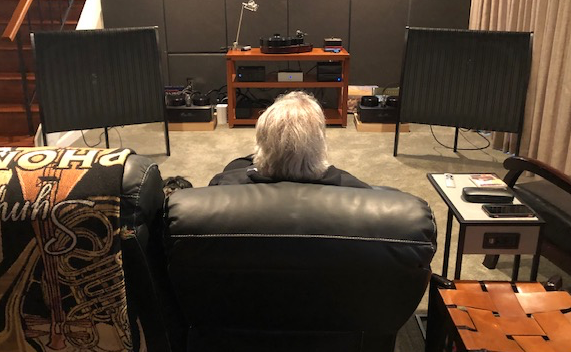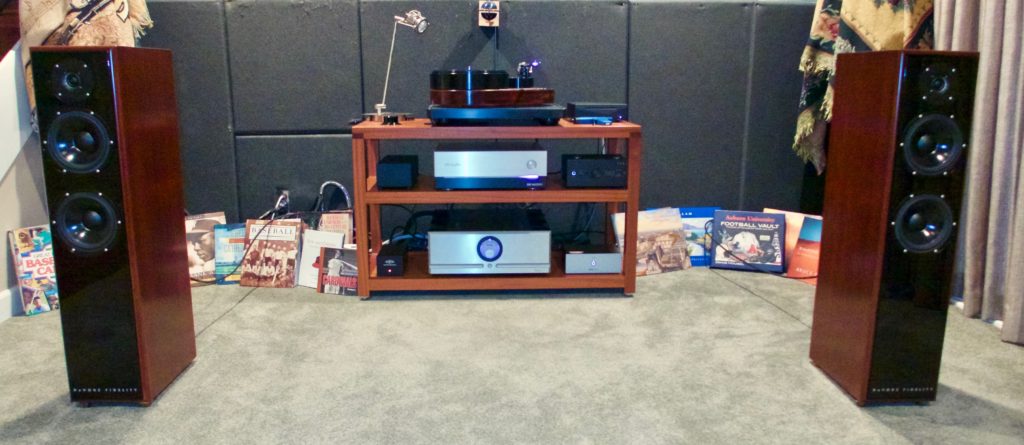
In Part 4 of my Reviewer series, let’s take a look at audio system speakers. I chose speakers for my reference system that allow me to experience recorded music in a way that is as close as possible to how I enjoy live music.
Years ago a cover on one of the major print magazines pictured two amps that were both considered to be state of the art at that time. One was a very large SIT tube amp, and the other was a huge and powerful solid-state amp. The caption implied that they couldn’t both be great, or could they?
This comparison question has been a struggle for reviewers and audio magazines ever since subjective reviewing became acceptable. The answer to the question has a lot to do with how you understand the purpose of your audio system.
Why I Own Two Pairs of Speakers
I’m not a collector so for me to own two of anything is unusual. I have built my audio systems over the years by selling one thing to buy something else. This is just part of who I am. I once spent three years collecting all of the cards in the ‘63 Fleer baseball card set. Then a few weeks after I had shown it off, I sold it.

So this is the first time ever that I’ve owned two pairs of speakers that I only use in my reference system. The speakers are the Electrostatic Solutions rebuild of the original QUAD ESLs (the ’57s). The other pair is the DeVore Fidelity gibbon SuperNines. I’ve written multiple articles about both of these and have provided the links below so I’m not going to describe their very different designs.
Comparing Them

Let me tell you about the core differences between these two speakers. I’ll also share how they are alike, and why I decided to buy them. It surprised me that both speakers sound best with the same amp. The Butler Audio Monad A100 Monoblocks (reviewed here) is my first choice for both speakers.
I did not have the Butler Audio amp at the time I did the review of the gibbons, and they are much improved by this amp. My second choice is the Pure Audio One 100-watt stereo amp (reviewed here). Both of these amps are pure Class A.
As an aside, I want to point out that reviewers are limited in their reviews by the equipment they have on hand. I would have never known that the Butler Audio monoblocks were a better match for the DeVores if I had not already bought the DeVores and had them in my system. This is why you should always trust your ears as to what components sound best in your system.
Planar vs. Dynamic Driver
The most obvious difference in these speakers is that the QUADs are electrostatic planar speakers and the DeVores are dynamic driver speakers. You shouldn’t expect planar speakers to perform like dynamic driver speakers.
The most significant way they are different is how they launch the music into the room. You’re not going to experience music in the same way with them. Dynamic driver speakers produce sound like a piston that pumps the music out into the room. With the QUADs, the sound comes out in a wave that is launched both behind and in front of the speakers. In fact, with my QUADs, the speakers don’t so much disappear as the performance just seems to start, and I feel like I’m sitting in the venue.
Now, I’m not suggesting that dynamic speakers are forward sounding or that electrostatic speakers are recessed. Both designs are capable of sounding either way. Most importantly both designs can enable you to experience music in your home at a very high level, but they don’t sound just alike.
Frequency Extension
The DeVore gibbons are significantly more extended at the frequency extremes, and this difference is significantly more important with some performances. This doesn’t mean that the bass sounds more lifelike on the DeVores, it just goes deeper. The bass with both speakers sounds incredibly alive.
This characteristic is an example of why a good reviewer should strive to let readers understand how components, particularly speakers, sound. If you are consistent in doing this, your readers will be able to know how two speakers sound different from each other.
The Soundstage
The last difference I want to talk about is the way they portray the performance, or what most think of as a soundstage. Each speaker is equally successful at transporting me to the event and making me feel like I am at the performance.
Where they differ is that the QUADs almost always make me feel like I am at a live event. They definitely fall into the “you are there” camp versus the “they are in your room” sound. This may not be accurate but it sure makes me happy.
The DeVores fall into neither camp, but their sound depends on the recording. Overall they produce much more of what audiophiles think of as a soundstage, but not so much as to ever be distracting.
Qualities That Make Me Love Both
Let me start this last section of this post by admitting that when listing to the QUADs I always think they are the best, but the same is equally true of the DeVores.
Both of these speakers play music with such beautiful tonal colors. They also produce some of the most realistic harmonics and timbre I have ever heard. Both of these speakers also have that special quality of aliveness. This is a quality that is hard to describe, but once you’ve heard it, you won’t want to live without it. With the right performances, they produce a sound that will move you emotionally. They both deliver music that you feel as much or more than music you merely hear.
The DeVores are definitely the more versatile of the two speakers, and the Quads are not for everybody. Look back at Part 3 of my review on the Quads where I describe who the Quads are not for.
Wrapping Things Up
In my reviews of these two speakers, I have tried to describe them in a way that does not say which is best. If you have some idea of how they sound at the end of my reviews, I have met my goal. I hope I have given you enough of an idea so that you know if these speakers may be for you or if you should mark them off of your wish list.
Either way, let’s all hope that sometime in the next year, it might be a lot easier to actually hear components live again at a show or in a retail setting. The only way to really know if a component is right for you is to trust your own ears.
Links to Previous Reviews:
The On-Going Story Of The Original QUAD Electrostatic Loudspeaker
ElectroStatic Solutions’ Original QUAD ESL Loudspeakers, Introduction
Review: ElectroStatic Solutions’ Original QUAD ESL Loudspeakers, Part 2
Review: ElectroStatic Solutions’ Original QUAD ESLs, Part 3
Reviewing the DeVore Fidelity gibbon Super Nines – Part 1
DeVore gibbon Super Nines Review – Part 2: Listening Notes
The Passing of the Guard – Teresonic to DeVore


a very nice review, thank you!
did you listen to the Tannoy Turnberry (93dB) once? could you compare it to the both you described?
beat regards
Andreas